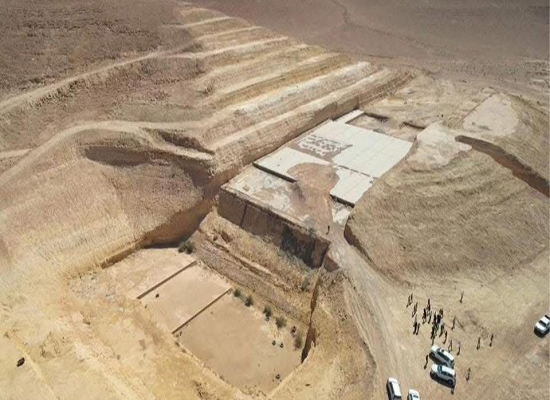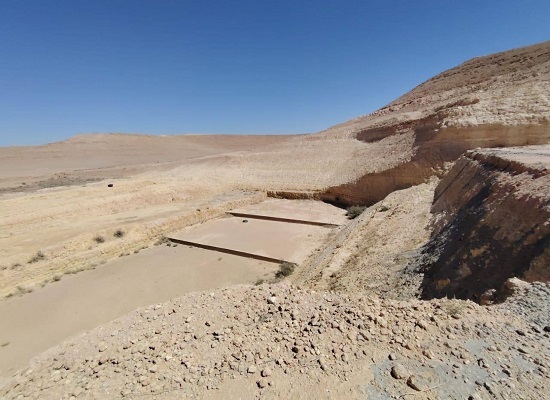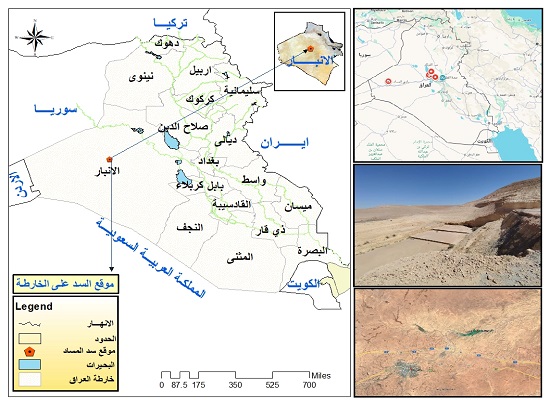| News Details |
Al-Masad Valley Dam and Its Role in Water Harvesting
2025-09-29

Assistant Instructor: Ala’a Yaseein Mohammed
Remote Sensing and Geospatial Analysis – University of Baghdad
Al-Masad Dam stands as a vital project within Iraq’s water harvesting sector, boasting a storage capacity of 6.8 million cubic metres. It is expected to play a key role in securing potable water, replenishing groundwater reserves, and enhancing the local environmental conditions.
Situated in the western reaches of Rutba District in Al-Anbar Governorate, the dam receives inflow from Al-Masad Valley —a principal tributary of Horan Valley. The catchment area shaped by the valley spans approximately 616 square kilometres. Geographically, the basin lies within Iraq’s western plateau, specifically in the western part of Al-Anbar, and falls under the administrative boundaries of Rutba District. The valley bisects the district, flowing northward to merge with Horan Valley, Iraq’s largest valley, thereby positioning Al-Masad Valley as its primary feeder. Astronomically, the basin is located between latitudes 32°39′54″N and 32°24′03″N, and longitudes 40°22′40″E and 40°02′24″E, covering an area of 616 km².
Iraq has a long-standing legacy of constructing major dams—such as Mosul, Haditha, Dukan, and Darbandikhan—developed in the latter half of the twentieth century to regulate water resources, generate electricity, and protect urban centres from flooding. However, since the 1980s, the country has ceased building new strategic dams, leading to mounting challenges amid climate change and reduced water releases from Turkey. This absence of large-scale infrastructure has left Iraq vulnerable to recent droughts, which have devastated the marshlands, drained rivers, and resulted in the loss of nearly 30% of productive agricultural land over the past three decades, according to the Strategic Centre for Human Rights.
Among the proposed initiatives are three dams included in the framework agreement with Turkey: Al-Abyad 2 in Karbala, Abu Taqiyya in Nineveh, and Al-Kharaz 2 in Muthanna Governorate.
Water harvesting is an ancient practice aimed at collecting and storing rainwater and surface runoff for agricultural, domestic, or drinking purposes. It encompasses natural methods occurring in low-lying valleys, as well as human interventions such as the construction of dams, ponds, and both surface and underground reservoirs. These systems are particularly valuable in regions facing freshwater scarcity, contributing to water resource augmentation, soil conservation, expansion of green spaces, and easing pressure on municipal water networks.
Al-Masad Dam plays a pivotal role in water harvesting during flood seasons due to its strategic location and its essential function within Anbar’s water harvesting initiatives. Its presence is intended to supply the region with water, diversify sources of water production, and bolster reserves to confront water shortages and climate variability.
#Upper_Euphrates_Center_for_Sustainable_Development_Research









